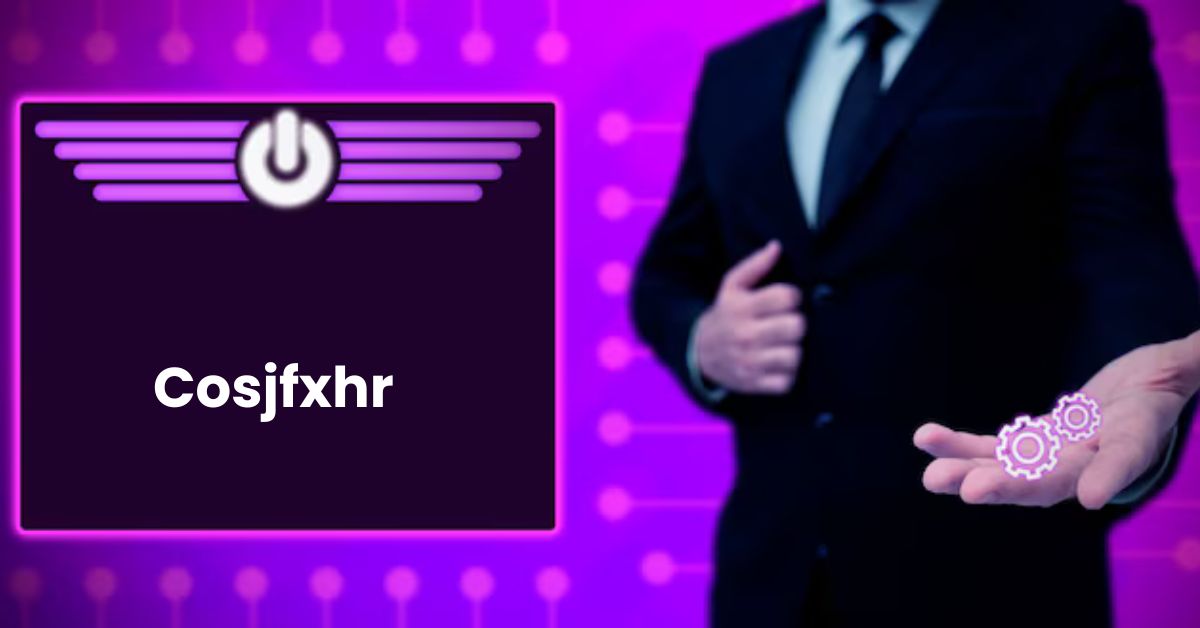Introduction: What is Cosjfxhr?
In the ever-evolving world of cybersecurity, Cosjfxhr new terminologies and systems emerge to combat the growing sophistication of cyber threats. One such intriguing and relatively lesser-known concept is Cosjfxhr. Though it may appear like a cryptic string of characters at first glance, Cosjfxhr represents a next-generation digital code protocol playing a vital role in enhancing online security, data integrity, and identity verification.
In this article, we’ll demystify what Cosjfxhr is, explore how it functions within modern security frameworks, and examine why it’s becoming a cornerstone in digital defense systems.
Understanding Cosjfxhr: A Digital Security Framework
At its core, Cosjfxhr is a cryptographic coding system developed to secure digital transactions, authenticate user identities, and shield sensitive data from cyber threats. Though the exact origin of the term remains enigmatic, cybersecurity experts consider it a framework or algorithm rather than a product or company name.
Key Features of Cosjfxhr:
-
End-to-end encryption compatibility
-
Multi-layer identity verification
-
Real-time threat detection
-
Adaptive algorithms for evolving cyber threats
-
Blockchain integration for immutability and transparency
How Cosjfxhr Works
The architecture of Cosjfxhr can be likened to a modular cryptographic engine. It doesn’t rely on a single encryption method but combines various encryption standards such as AES, RSA, and SHA hashing algorithms, with additional layers of behavioral authentication and AI-driven anomaly detection.
Step-by-Step Workflow:
-
User Initiation: A digital session begins with a user login or transaction request.
-
Dynamic Key Generation: Cosjfxhr generates a unique, session-based encryption key.
-
Biometric/Behavioral Verification: The user is authenticated using device ID, typing patterns, or facial recognition.
-
Encrypted Communication: All data transferred during the session is encoded using the generated key.
-
Threat Analysis: Real-time monitoring tools identify any anomalies, blocking suspicious activity instantly.
-
Log & Trace: All activity is logged using a blockchain ledger, ensuring transparency and non-repudiation.
Applications of Cosjfxhr in Real Life
Cosjfxhr’s robust digital protection capabilities make it highly useful in several domains:
1. E-Commerce Transactions
Safeguards sensitive customer data and payment information.
2. Healthcare Data Protection
Ensures HIPAA-compliant encryption for electronic health records.
3. Online Banking
Secures banking sessions with multi-factor and behavior-based authentication.
4. Government and Defense
Protects classified communications with top-tier encryption and digital forensics.
Why Cosjfxhr Matters in Today’s Cyber World
With cyberattacks increasing in complexity and frequency, traditional firewalls and static passwords are no longer sufficient. Cosjfxhr provides:
-
Proactive Defense: Identifies and blocks threats before they cause damage.
-
Zero Trust Architecture: No session or user is inherently trusted—every interaction is validated.
-
Scalability: Suitable for both small businesses and large enterprises.
-
AI & Blockchain Integration: Creates a futuristic framework ready for quantum computing challenges.
Challenges and Limitations
Despite its strengths, Cosjfxhr is not without challenges:
-
Implementation Complexity: Requires advanced infrastructure and skilled professionals.
-
Processing Overhead: Heavy encryption and AI analysis can slightly impact performance.
-
Limited Awareness: As a newer term, widespread understanding and adoption are still growing.
Future of Cosjfxhr
The future of Cosjfxhr is promising, especially as digital threats evolve. Integration with quantum-resistant algorithms, decentralized identity systems, and IoT device protection could make it a vital part of digital life.
Experts predict that Cosjfxhr—or technologies derived from it—will become standard protocol across industries handling sensitive data.
Frequently Asked Questions (FAQs)
Q1: Is Cosjfxhr a software or an encryption method?
A: Cosjfxhr is better described as a digital framework or protocol that uses various encryption and verification methods rather than a standalone software.
Q2: Who uses Cosjfxhr?
A: It’s being adopted by organizations in finance, healthcare, e-commerce, and government sectors due to its robust security features.
Q3: Can Cosjfxhr protect against ransomware?
A: Yes, its real-time threat monitoring and end-to-end encryption help in identifying and blocking ransomware attacks proactively.
Q4: Is Cosjfxhr open-source?
A: Current implementations may vary. Some versions are proprietary, while others are being developed in open-source communities focusing on cybersecurity.
Q5: How does Cosjfxhr differ from traditional encryption?
A: Traditional encryption often relies on static methods, while Cosjfxhr uses dynamic, multi-layered, and adaptive algorithms with AI analysis, offering higher resilience.
Final Thoughts
Cosjfxhr represents the cutting edge of digital security innovation. In an era where online threats grow more dangerous and data privacy is paramount, adopting frameworks like Cosjfxhr could spell the difference between safety and vulnerability.
While still in the early stages of mainstream recognition, the impact of Cosjfxhr in redefining how we secure digital interactions is undeniable. Stay ahead of the curve—embrace the future of security with Cosjfxhr.

